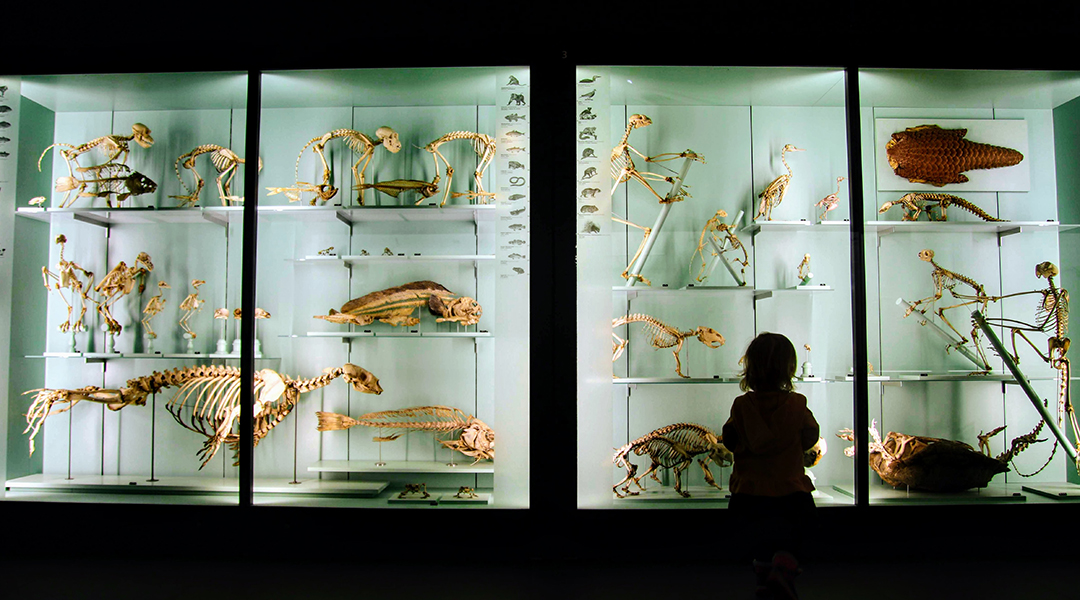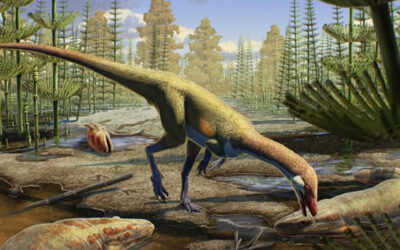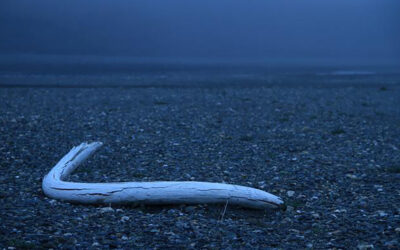For 160 million years, dinosaurs were the most prominent form of animal life on the planet, ruling over a world where our mammalian ancestors existed in the periphery of the dinosaurs’ kingdom.
Research in the field of paleontology has continually suggested that the asteroid impact that wiped them out at the end of the Cretaceous Period, otherwise known as the K/Pg Event, which took place roughly 65 million years ago was the catalyst that allowed mammals to grow in size and radiate into the many forms we see today.
This leading explanation posits that by eliminating the presence of large dinosaurs, such as Tyrannosaurus rex, Triceratops, and the other large beasts of their age, mammals were able to fill the gaps, so to speak, by evolving into larger forms and filling the newly emptied ecological niches, diversifying in the process.
While this basic premise is still accurate, new sampling of fossilized mammals across North America is demonstrating that the diversification of mammalian species following the extinction of the dinosaurs cannot solely be explained by the evolution of large body sizes alone.
To be more specific, we are now learning that smaller mammal species of less than 100g diversified at a similar magnitude to larger ones, leading paleontologists to speculate on what caused this explosion in diversity.
The leading explanation is that a combination of the vacuum left by the extinction of the dinosaurs and other vertebrates, and a reorganization of the environment likely catalyzed by the evolution of flowering plants, giving smaller mammals greater access to energetic resources, which led to an improvement in their ability to partition them amongst themselves.
What did the world of the Late Cretaceous period look like?
In every environment, there are ecological niches that can best be explained as the roles that plants and animals fill in their local community as well as how that role interacts with others to help the ecosystem function.
A great example of this is the delicate balance between predator and prey, or a scavenger feeding on a kill after a hunt has concluded. In the context of the Late Cretaceous Period, the actors we normally associate with these ecological roles looked quite different than they do today.
“Ecosystems in the Mesozoic (252-65 million years ago) probably looked quite different to those that arose after the K/Pg. Dinosaurs and other reptiles were prominent in faunas, but mammals also carved out their own niches,” explained Gemma Benevento, researcher of macroevolutionary paleobiology at the Senckenberg Biodiversity and Climate Research Institute and one of the authors of a recent study exploring the topic published in the journal Palaeontology.
“In the Mesozoic, mammals had to find resources that were not already being used by dinosaurs and other Mesozoic clades, and they actually did so pretty successfully,” she continued. “Although mammals were small during the Mesozoic, they actually had a lot of different ecologies. Fossils show that these mammals were burrowing, climbing trees, swimming, and even gliding.”
Why North America?
After the dinosaurs went extinct, mammals took over the vacant landscape left behind in the wake of the massive asteroid that wiped out 75% of life on the planet. By analyzing fossil specimens of mammals from North America, Benevento and co-authors were able to get improved insight into how the composition of life on Earth changed following this devastating event.
“One of the things that is very obvious in the mammal fossil record is the addition of much larger species after the K/Pg boundary,” she said. “During the Mesozoic, mammals were relatively small. This is thought to be because of competition at larger body sizes from the much larger dinosaurs for resources such as food and space in the environment.”
“When dinosaurs went extinct, there were a lot of niches and resources newly available to surviving clades. Mammals, and in particular placental mammals who had evolved some important and beneficial morphological traits, fared well across the K/Pg boundary, and seem to have been primed to take over some of those niches left vacant by the dinosaurs, but also niches left empty by other mammal groups and clades that suffered more significant losses during the K/Pg extinction event.”
North America has an extremely complete fossil record for mammalian species following the K/Pg boundary, which made it perfect for answering evolutionary questions of this kind. “The record is both relatively continuous (i.e., there are not many gaps in geological time in the record) and the fossils numerous,” said Benevento.
“The extent of the data available to us is likely a combination of favorable environmental conditions for fossilization and the amount of interest there has been from researchers both prospecting for and identifying fossils for over a century in this region of the world,” she continued. ‘This exceptional record gives us the most statistical power to ask quantitative questions about mammal diversity and evolution in the past, so we focused our study on North America.”
Analyzing species-diversity estimates
To estimate species diversity, the researchers first took species occurrence data from the Paleobiology Database and calculated estimates of their body mass using measurement data from the first molar of the lower jaw.
In many mammal species, the first molar of the lower jaw correlates very well an individual’s body mass in currently living species, making it an ideal metric for classifying different body sizes for the fossilized mammal species under scrutiny. The final groupings were simply categorized as: small, medium, and large.
Using these groupings, the researchers analyzed species diversity over time. They found a four-fold increase in mammal species richness following the K/Pg boundary, confirming previous studies looking at mammalian evolution after the extinction of the dinosaurs.
What is most interesting, however, and the focal point of this study, is that small-bodied mammal species also became more abundant around the same time.
“Our research highlights that even the smallest mammals, those with body masses equivalent to mammals that seemed to carve out niches successfully during the ‘Age of Dinosaurs’ became a lot more specious after the K/Pg boundary,” explained Benevento. “We show quantitatively that it wasn’t just the addition of larger-bodied mammals that increased mammal diversity after the extinction event, but an increase in mammals at all body sizes i.e., there were more small- and medium- bodied mammals as well as the addition of large-bodied mammals after the K/Pg, not just the addition of large-bodied mammals.”
What caused smaller mammal species to diversify so quickly?
With a clear result showing that smaller mammals diversified at a similar magnitude to larger ones, the question that begs to be asked is, why?
For one, an asteroid impact is certain to cause ecosystem disruption, opening up new niches that may not have existed before. “[These results] suggest that there was likely a complete remodeling of ecosystems after the K/Pg mass extinction,” explained Benevento. “These new Cenozoic ecosystems appear to have been able to host a larger number of different species overall — something that previous work that looked at tetrapod diversity as a whole has also shown.”
“We can’t be certain why this was, but it could have been a combination of niche-clearing by extinctions among both dinosaurs and earlier mammal clades alongside the appearance of novel niches in the Cenozoic, allowing faunas to support more species” she continued.
“One of the ways in which ecosystems may have been able to support more diverse faunas could have been due to the evolution and subsequent radiation of flowering plants. Flowering plants diversified throughout the Late Cretaceous and into the Paleogene, and mammals appear to have been in the perfect position to take advantage of these new resources.”
This research adds a new perspective to our understanding of the history of life on Earth, and allows us to think about ecosystem re-structuring following mass extinctions in new and exciting ways. Going forward, it will allow researchers to generate and test new hypotheses regarding the drivers of mammalian evolution following the K/Pg boundary.
Reference: Gemma Louise Benevento, Richard J. Butler, et al., Early Cenozoic increases in mammal diversity cannot be explained solely by expansion into larger body sizes, Palaeontology (2023). DOI: 10.1111/pala.12653
Feature image credit: Simon Infanger on Unsplash

















